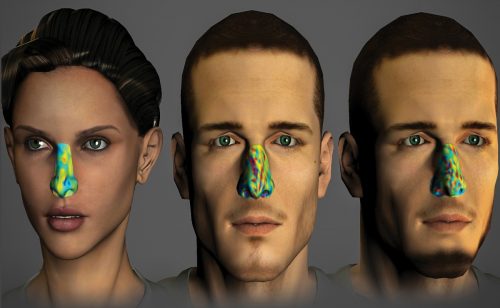Do children on the autism spectrum react to pleasant and unpleasant smells in the same way as children with normal development

It seems clear to all of us what are bad smells and what are good smells: shampoo has a good smell, rotten fish - less so. But does everyone react to smells the same way? In a study, the results of which were recently published in the scientific journal Current Biology From the Cell group, Weizmann Institute of Science scientists tested whether children on the autism spectrum react to pleasant and unpleasant smells in the same way as children with normal development.
The connection between various characteristics of the sense of smell and autism has already been studied in the past, but until now there were no unequivocal conclusions, and sometimes they were even contradictory. Prof. Noam Sobel and research student Liron Rosenkrantz, from the Department of Neurobiology at the Weizmann Institute of Science, hypothesized that the contradictory findings stem from the use of verbal measures - a problematic scale when it comes to autistics. Therefore, when they wanted to investigate the perception of smell in autistic children, they jumped over the verbal barrier by directly measuring the children's reaction to different smells ("sniff response"). "We tend to inhale deeply when we encounter a pleasant smell, and take a smaller inhalation when we encounter a bad smell," explains Rosenkrantz. "Apparently, this phenomenon is related to the activity of the cerebellum - an area of the brain that is related, among other things, to autism."
18 autistic children participated in the experiment, which was carried out in collaboration with Prof. Ditza Tzhor, director of the autism diagnosis center at Assaf Harofeh Medical Center. 18 more children, whose development is normal, served as a control group. The average age of the children was seven years. The experiment lasted about 10 minutes, during which the children's breathing was measured using a cannula located at the opening of the nostrils. At the same time, pleasant and unpleasant odors were passed through the canola for a few seconds, at intervals of about 30 seconds from each other. The sniffing response of the control group was normal - a deep breath for pleasant odors and a shorter breath for unpleasant odors. But the reaction of the autistic children was different: from measuring their sniffing reaction, the conclusion emerges that they did not regulate their breathing according to the smells at all.
Through computer processing of the data, the scientists created an algorithm that was able to identify in 81% of the cases, and based on the sniff response data alone, whether the child has autism. The processing of the information even showed a significant correlation between the sniffing response and the severity of autism: the more severe a child exhibited symptoms of autism, the longer he inhaled the bad smell. Since it is a non-verbal measure that does not require high cognitive abilities, the scientists hope that perhaps, in the future, the test will help identify symptoms of autism at a younger age than is currently possible.

One response
It is not clear from the article if the autistic person who took a deeper breath of the bad smells actually reacted to the smell in a negative way, or if he accepted the smell in a relaxed way. It is also not clear from the article whether smells that are considered by 'normal children' as pleasant smells are rejected by autistic people.
If you are already dealing with autism and smells then you should expand the investigation there as well.